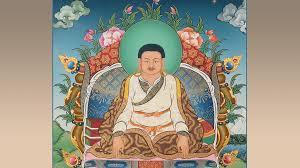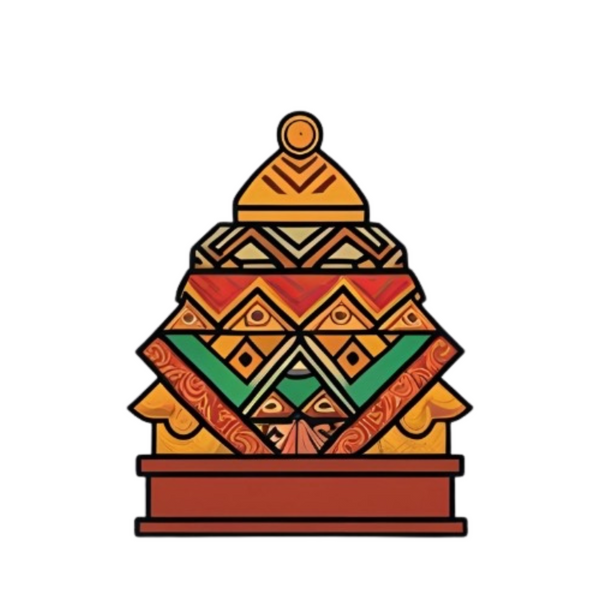
Marpa Lotsawa — The Great Translator of Tibet
In the high winds and rugged mountains of 11th-century Tibet, a young man named Marpa Chökyi Lodrö was born into a world both rich in potential and shadowed by ignorance. The Dharma had reached Tibet a few centuries earlier, but much of its purity had faded. Marpa, fierce by temperament yet filled with a boundless thirst for truth, would become one of the few who rekindled that sacred flame.
The Call of the Dharma
From an early age, Marpa displayed a sharp mind and a fiery spirit. Though intelligent, he was known for his temper and restlessness. Yet beneath this rough exterior burned a profound yearning — the wish to find genuine teachings that could lead beyond suffering.
At a time when travel between Tibet and India meant crossing glaciers, deserts, and bandit-filled valleys, Marpa made the daring decision to journey southward in search of authentic masters. He sold his inheritance to fund the voyage, leaving behind his home in Lhodrak, southern Tibet, and setting out on a path that would test every limit of endurance and faith.
Journey to India
Marpa’s pilgrimage took him across the vast Himalayan passes to Nepal and India, the spiritual heartlands of Buddhist wisdom. There he met his destined teacher, the great Mahasiddha Naropa, who had himself been the disciple of the legendary Tilopa. Under Naropa’s guidance, Marpa received the most profound transmissions of Vajrayana, including the teachings of Mahamudra, Hevajra, and Chakrasamvara Tantra.
But the teachings were not offered lightly. Naropa demanded complete devotion and effort. Marpa faced hardships, disappointments, and trials that seemed beyond endurance. Yet he persevered with humility and courage. In time, Naropa blessed him as his heart son, saying that Marpa would carry the flame of realization to the snowy land of Tibet.
The Great Translator
Marpa did not merely receive teachings — he also worked tirelessly as a translator (Lotsawa). At that time, few Tibetans understood Sanskrit, and sacred texts from India risked being lost forever. Marpa dedicated years to mastering the language, collecting manuscripts, and translating them into precise Tibetan equivalents.
Through his skill and diligence, he preserved hundreds of texts and commentaries, ensuring that the essence of Indian Vajrayana could take root in the Tibetan soil. For this reason, later generations called him Marpa the Translator, not only for his linguistic mastery but for his spiritual bridge between two worlds — India and Tibet, knowledge and realization.
Marpa and Milarepa
Among Marpa’s many disciples, one stands above all others — Jetsun Milarepa, the saint of Tibet.
When Milarepa first came to him, he carried deep remorse for the black magic he had once used in revenge, which caused the deaths of many. Seeking redemption, he threw himself at Marpa’s feet, begging for teachings that could purify his karma.
But Marpa, knowing that true liberation requires complete transformation, refused to grant him the teachings easily. Instead, he made Milarepa build and dismantle stone towers, again and again, under scorching sun and freezing winds.
Each tower represented the dismantling of Milarepa’s ego and the rebuilding of his soul. Years passed in hardship and despair, until Milarepa broke down in tears of complete surrender. Only then did Marpa reveal the reason for his trials — they had purified Milarepa’s negative karma and opened his heart to genuine devotion.
With compassion deeper than the mountains, Marpa finally transmitted to him the most secret instructions of Mahamudra and the Six Yogas of Naropa. Through these, Milarepa attained enlightenment within a single lifetime and became Tibet’s most beloved yogi.
The Legacy of the Kagyu Lineage
Before his passing, Marpa established a pure lineage of teaching that would later be known as the Kagyu, meaning “oral lineage.”
The transmission flowed in an unbroken stream:
Tilopa → Naropa → Marpa → Milarepa → Gampopa → Karmapa
Through this chain of realization, the Kagyu school became one of the four major traditions of Tibetan Buddhism, emphasizing direct experience, devotion, and the continuity of master-to-disciple transmission.
Marpa’s life reminds practitioners that enlightenment is not achieved through comfort or convenience, but through courage, humility, and unwavering faith. His own path — marked by perilous journeys, painstaking translations, and uncompromising discipline — was itself an embodiment of the Dharma he carried.
The Translator of Enlightenment
To this day, Marpa Lotsawa is revered not only as a scholar but as a living symbol of perseverance and devotion. He translated not just words, but the very light of wisdom — transforming foreign languages into living realizations within the Tibetan heart.
In the Kagyu tradition, Marpa is often visualized as a householder-yogi, wearing simple robes, holding scriptures in one hand and a vajra in the other — embodying both study and realization, wisdom and method.
His story continues to inspire those who walk the spiritual path:
to seek truth across boundaries, to endure hardship for wisdom, and to recognize that true translation is the transformation of the mind itself.
